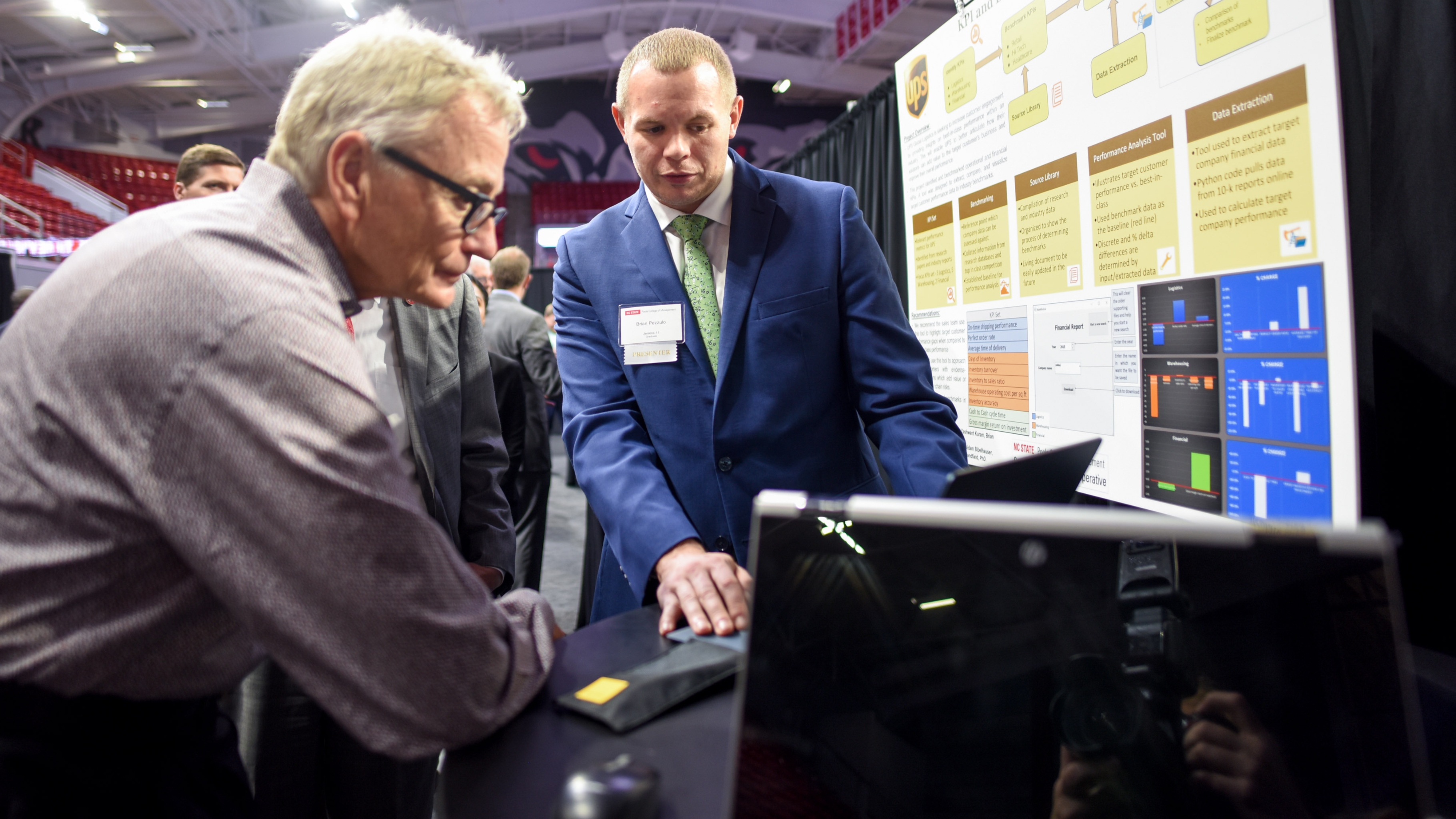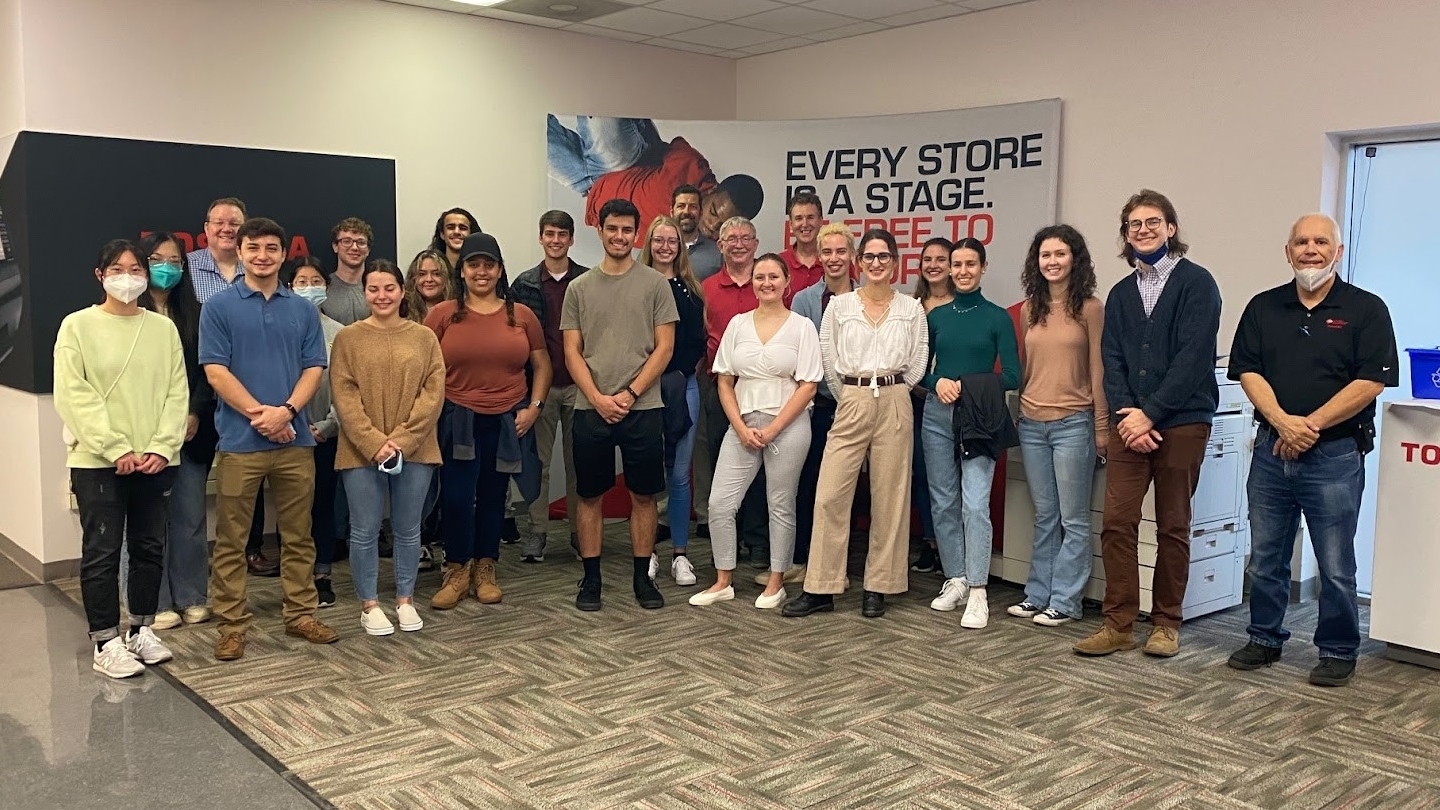The Continued Impact of NC State Supply Chain on UPS’ Vision and Strategy

In an interview with Poole College Marketing and Communications earlier this year, Brian Carrier, VP of Supply Chain Innovation at UPS Supply Chain Solutions, discussed his company’s new partnership with NC State’s Supply Chain Resource Cooperative (SCRC), including how they were leveraging student project teams to develop innovative supply chain solutions. In a follow up interview last month, Carrier, the company’s VP of Supply Chain Innovation, shared new information about how their team has recently applied those projects, what they’re working on now with the SCRC, and what their plans are for future collaboration.
Developing new customer services
Last semester, Carrier helped facilitate several projects with NC State supply chain MBA and PhD student teams to develop sales and solutions tools for UPS, as well as define market strategies to better understand who they should be targeting with their new Lead Logistics Provider (LLP) strategy in the Fourth-Party Logistics (4PL) space. “The students helped with validating our vision for analytics and LLP from a market perspective. That validation has been helpful for us to further define our strategy in those two areas,” he said in the follow-up interview.
[marketing-quote color=’blue’ quotes=’true’ align=’right’ source=’Brian Carrier, VP of Supply Chain Innovation, UPS Supply Chain Solutions’]The students helped with validating our vision for analytics and LLP from a market perspective. That validation has been helpful for us to further define our strategy in those two areas.[/marketing-quote]
With a clearer understanding of market needs, Carrier and his team have since been working with the SCRC’s executive director, Dr. Robert Handfield, and PhD student, Srini Balan, on a new ‘Analytics as a Service’ project that involves the development of specific analytics services they plan to create and market to their customers. “The goal [of the new project] is to map out all the different specific services that would be included in the different levels of analytics subscriptions for our customers, and so far the research [from last semester] has been really helpful in allowing us to map out those details,” he said.
As of August 14th, Carrier said they planned to complete the new project with Balan and Dr. Handfield the following week.
The impact of other projects
Carrier also spoke to the positive impact of some of the MBA practicum projects from last semester, which he said “were more focused on developing tools that would be helpful for our sales and solutions teams.”
“One of the projects that was helpful was the team that worked on developing a client targeting tool,” Carrier said. “The objective was to create a tool that we could use that would give us a quantitative way to evaluate prospective LLP customers and determine which ones were good opportunities to pursue.”
While the UPS team hasn’t fully adopted the tool yet, Carrier said, “It’s there and ready when we need it. I think the tool will be more formally adopted in the future as we build out our pipeline of projects.”
Carrier also mentioned a benchmarking tool developed by one of last semester’s MBA teams that has since been turned over to their sales team for implementation.
Other student projects from the spring 2019 semester involved identifying and recommending potential technology platforms the company could leverage, which has been integral to the progression of the aforementioned ‘Analytics as a Service’ project. “The elements on which we chose to evaluate those providers [from the technology platform project] are pretty closely tied to the different products and services that Dr. Handfield and Srini have helped us map out [for the ‘Analytics as a Service’ project]. So that’s just one example of how this new project has been a byproduct of the other work from the student teams and how we’ve leveraged that work,” Carrier said. “This new project is going to help us even further build on our ecosystem of analytics and AI partners that we can work with for customer’s specific projects.”
Plans for future projects
Following the completion of their latest project, Carrier said they plan to continue collaborating with the SCRC on additional projects during the 2019 – 2020 academic year. “There’s a project potentially in the future that we’re scoping out right now with Dr. Handfield, which is potentially a customer-facing pilot,” he said. “Dr. Handfield and one of the student resources are already working with one of our potential customers on a project, and there may be an opportunity for us to pilot something where that resource and some MBA students would help lead the charge on this pilot for the customer.”
Carrier also mentioned that, to support the new project this fall, they are looking to leverage one of the SCRC’s Graduate Research Assistants (GRA), Nikhil Singh. “One of the great things about working with Dr. Handfield is that he’s linking that GRA program project with an MBA team that will support Nikhil on that project. I think that’s a really neat approach,” he said.
In addition to the project to which Singh will be assigned, Carrier said his team also hopes to develop some additional projects for MBA teams this semester that will follow up on and continue the work done by some of the spring 2019 semester MBA teams.
- Categories:


